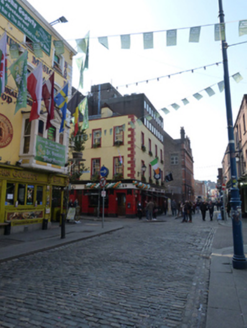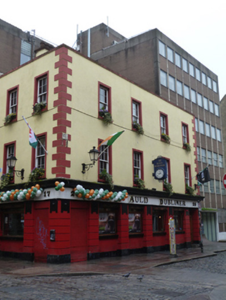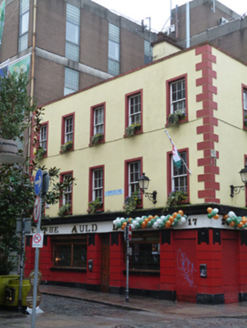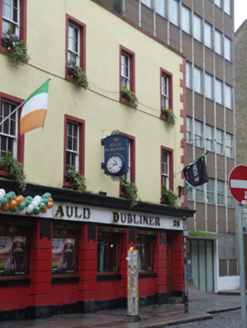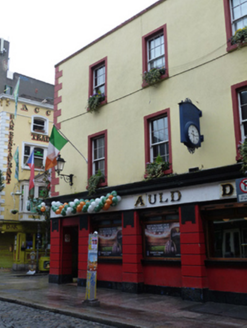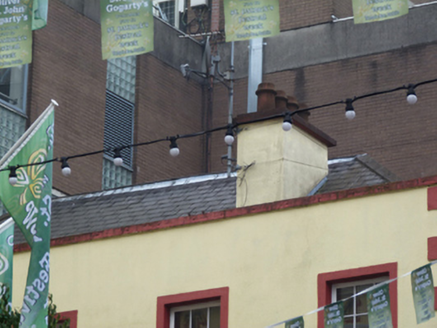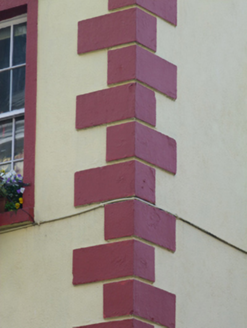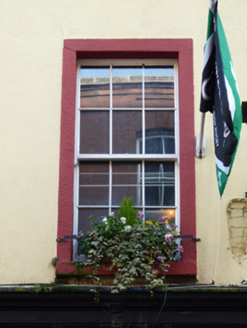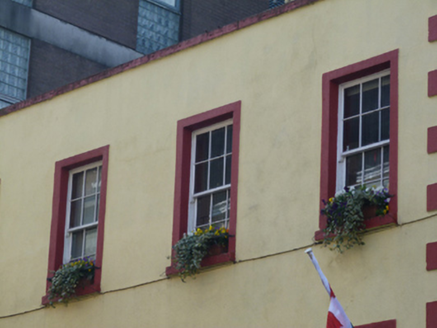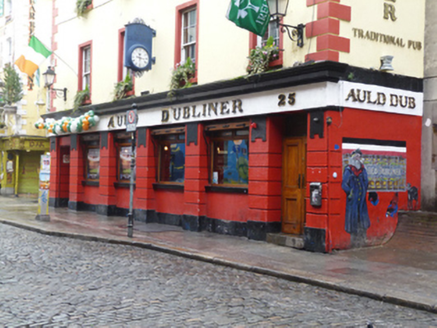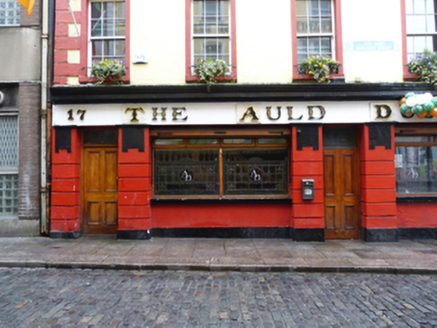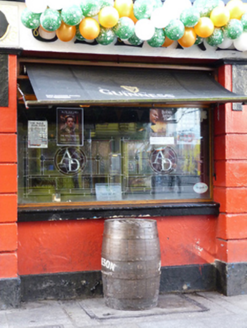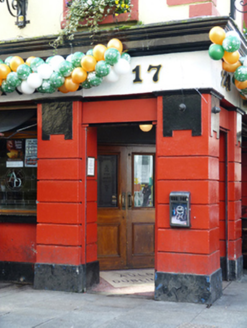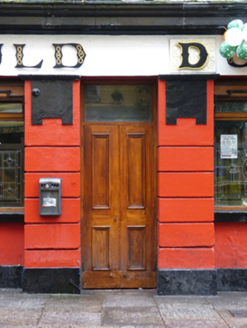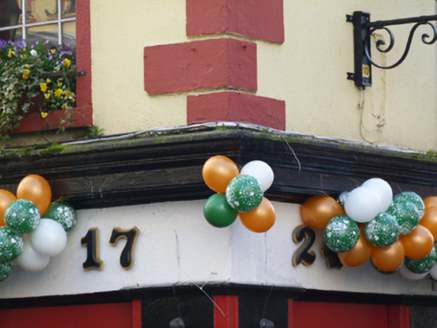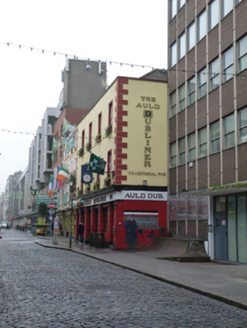Survey Data
Reg No
50020187
Rating
Regional
Categories of Special Interest
Architectural, Artistic, Social
Original Use
House
Historical Use
Shop/retail outlet
In Use As
Public house
Date
1830 - 1850
Coordinates
315802, 234197
Date Recorded
18/03/2015
Date Updated
--/--/--
Description
Corner-sited attached four-bay three-storey former house, built c.1840, having wraparound shopfront to front (north) and east elevations and five-bay elevation to east. Now in use as public house. Mansard slate roof, partly hidden behind rendered parapet with masonry coping, rendered chimneystack with clay pots. Smooth rendered walls having render quoins and plinth course. Square-headed window openings with render architraves, masonry sills and six-over-six pane timber sliding sash windows. Shopfront comprising channelled render pilasters supporting fascia having raised timber lettering and moulded cornice. Square-headed display window openings on rendered stall risers, masonry sills and timber casement windows. Square-headed door opening to recessed angled porch, double-leaf half-glazed timber panelled door, terrazzo floor. Square-headed door openings to front and east elevations, single-and double-leaf timber panelled doors and overlights. Located at junction of Temple Bar and Anglesea Street.
Appraisal
Temple Bar was named after Sir William Temple and his son Sir John Temple who acquired the land between the River Liffey and Dame Street in the seventeenth century. The area was fully reclaimed and developed by the early eighteenth century and became a mixed residential and commercial quarter. Commercial directories record a ‘grocer and spirit dealer’ here, owned in the 1840s by Thomas Hunt, and in the 1890s by Thomas Murphy, indicating a continuity of use for over one hundred and seventy years. This building retains much of its early form and fabric, with timber sliding sash windows contributing to the patina of age evident in the composition, and render detailing lending textural variety to the façade. The shopfront adds contextual as well as decorative interest to the building.
